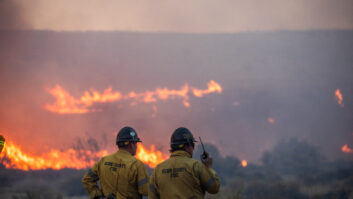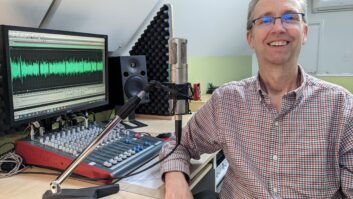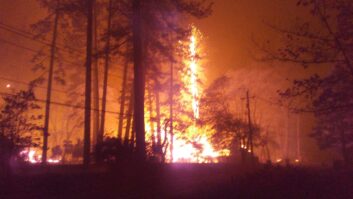Disaster preparedness normally revolves around mitigating issues and maintaining broadcasts when extreme weather events like hurricanes and storms strike. There are not many disaster plans that mention virus outbreaks, such as the coronavirus emergency being experienced globally.
It appears as if the COVID-19 health emergency may persist for several weeks and potentially several months. Is your network prepared for the possible impacts of COVID-19 on broadcasts when staff either fall ill, or are asked to self-isolate when they have been in the vicinity of infected individuals?
In the following Q&A, Henrik Poulsen, technical manager for Nordjyske Media in Denmark, relates his preparations in case the COVID-19 outbreak requires on-air broadcast staff to be isolated and work from home.
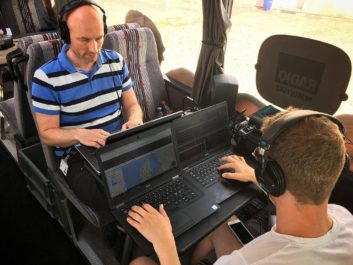
Radio World: Why did you decide to create six portable home studio kits for Nordjyske Media?
Henrik Poulsen: Currently, the strategy in Denmark is to put people who have COVID-19, and any people they have been close to, in home quarantine for 14 days. Our plan is a “worst-case scenario,” where nobody can come to the studios for 14 days. We have two radio stations (ANR and Radio Nordjyske) and normally more than three shows per day, but in case of COVID-19 the plan is to cut down to three shows of four hours on each station.
RW: What equipment did you include in the kits?
Poulsen: Our setup is only possible because of Tieline, Wheatstone, RCS and Røde. We have two setups, one for live and one for track (a song or two ahead):
- Tieline ViA is our go to solution for any remote broadcast, and we have two sets of the ViA codec. The challenge is our multi-host shows, where you are in the same room. Our take on this is to have the ViA at the “main host” house, and then have the sidekick on the Tieline Bridge-IT or Report-IT app connected to and mixing it internally on the ViA. Music, jingles and news are still being played out from the station, and we control it by RCS Zetta2Go and Wheatstone Glass-E.
- This is for track and can be done with one USB mic (Røde USB-NT mini). This is planned for midday shows and weekend tracks. Drive is one step up, and here we use “a Podcast studio setup”, with Røde all over. Rødecaster Pro (USB to the computer making it a soundcard) and one PodMic. This gives us an easy way to have phone calls in the shows as the Rødecaster supports Bluetooth connections from a mobile phone. They can be combined with a Tieline Bridge-IT making it a live setup.
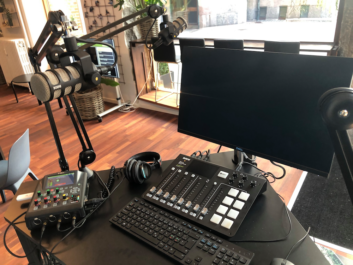
RW: How about turning the fader up in the studio, when there is nobody at the station?
Poulsen: This is done by LIO (GPIO) in the Wheatstone and can be triggered by a button press on the Tieline ViA or a macro in the RCS Zetta playout system.
RW: Have you put together instructions for announcers about using the equipment if required, or how do you plan to support them with technical information?
Poulsen: Everybody has already taken their setup home and also tested it. It’s plug’n’play and won’t take any longer than five minutes to get up and running. As CTO, I have to be able to support and monitor all shows at any given time.
This is done by Wheatstone Glass-E and a Tieline Cloud Codec Controller, from where I can control any Tieline codec from setting the input levels if needed to set up connections, monitoring the quality of the stream coming in and out of our station. (public internet).
RW: How will you supply kits to people if they are required a long way from where you are located?
Poulsen: Everything is already in the homes of our hosts (me being one of them), and all the Røde is off the shelf and can be delivered from day-to-day, right to the doorstep.
RW: What do you foresee is the worst-case scenario for Nordjyske Media and other radio broadcasters?
Poulsen: Worst-case scenario is a total lockdown, but that is exactly what this plan is made to accommodate.
RW: Are you aware of other European broadcasters looking at similar work-from-home strategies, or is there anything else that you think would be useful to consider when preparing for the health emergency as it evolves over coming months?
Poulsen: Most of my CTO colleagues in Denmark are working on a plan where one or more staff members have to be away from the radio station. We have chosen to plan for the worst-case scenario and all workflows can now be done from home. This goes from music scheduling, traffic reports, news and hosting. Have a plan is my motto, and I’m sure I’m not the only one.


